#funerary sculpture
Explore tagged Tumblr posts
Text
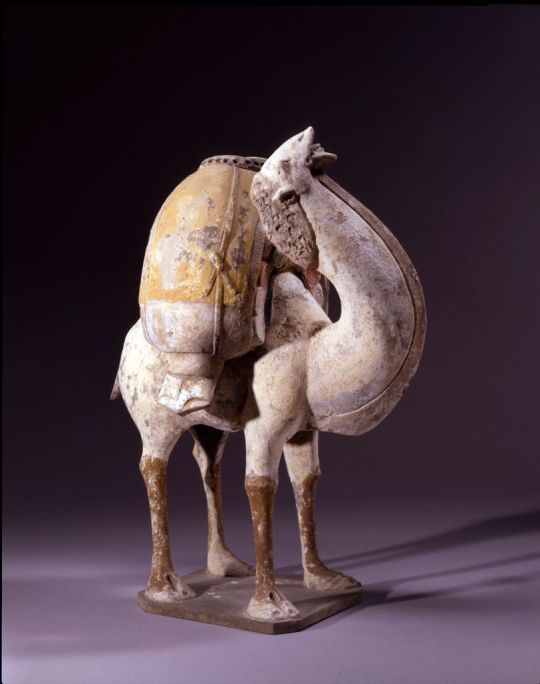
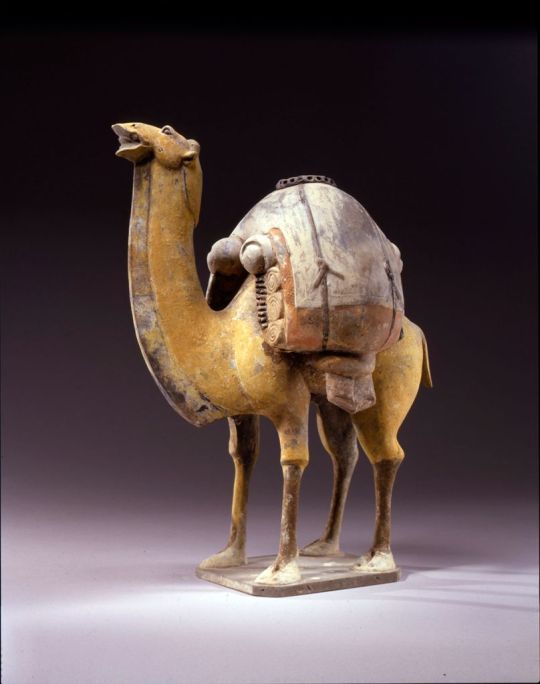

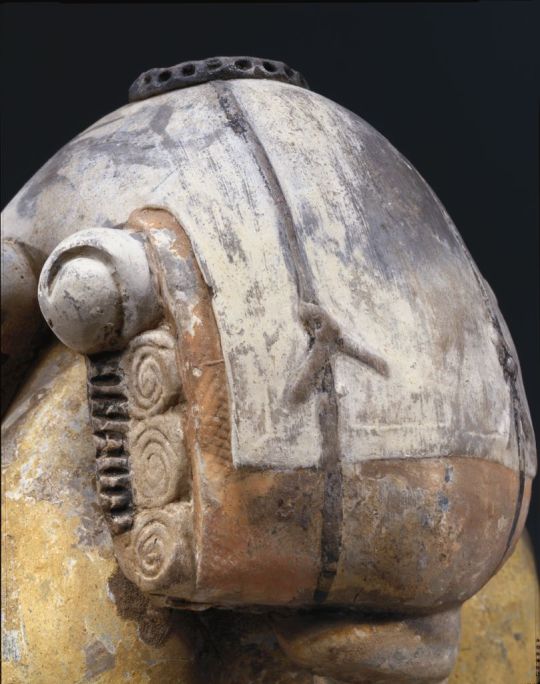
~ Two Standing, Braying Camels, One Buff, One White, Their Backs Laden with Goods.
Date: A.D. 550-577
Period: Northern Qi
Place of origin: East Asia, China
#6th century#art#history#asian arts#china#Chinese#funerary#funerary art#museum#archeology#archaeology#funerary sculpture#camel#camels#northern qi#a.d. 550#a.d. 577
1K notes
·
View notes
Text
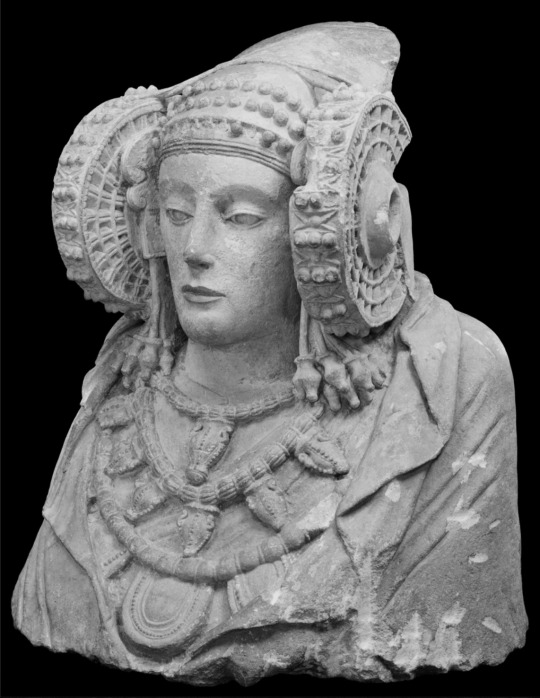
Greco-Iberian, The Lady of Elche, ca. 4th century BCE, limestone (National Archaeological Museum, Madrid)
59 notes
·
View notes
Text

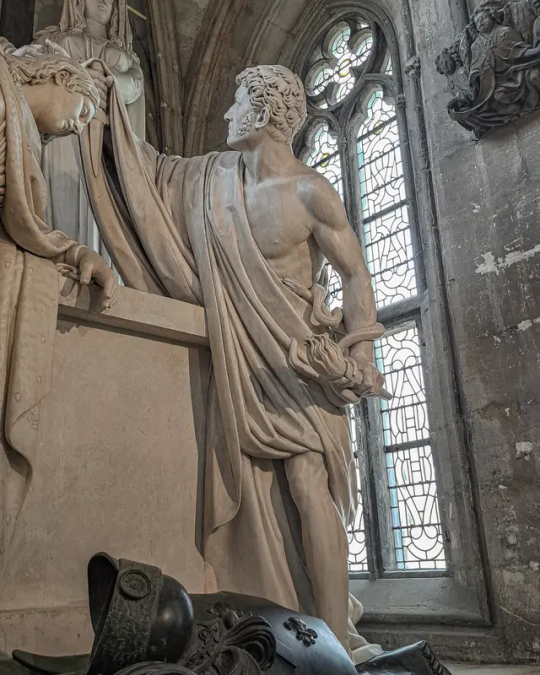
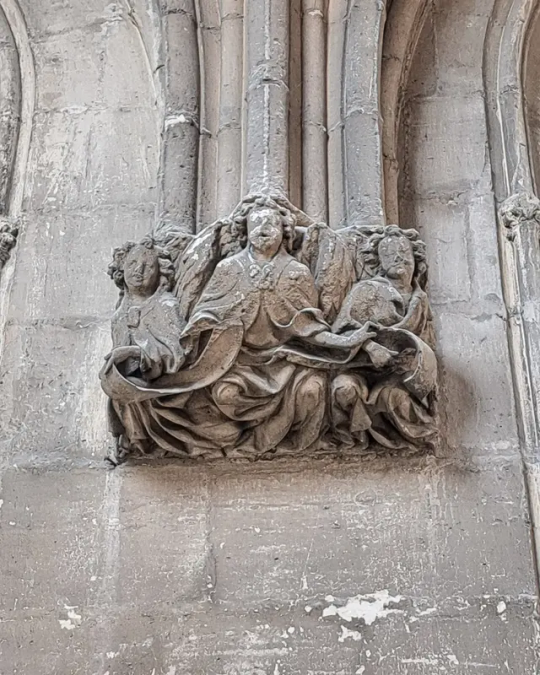
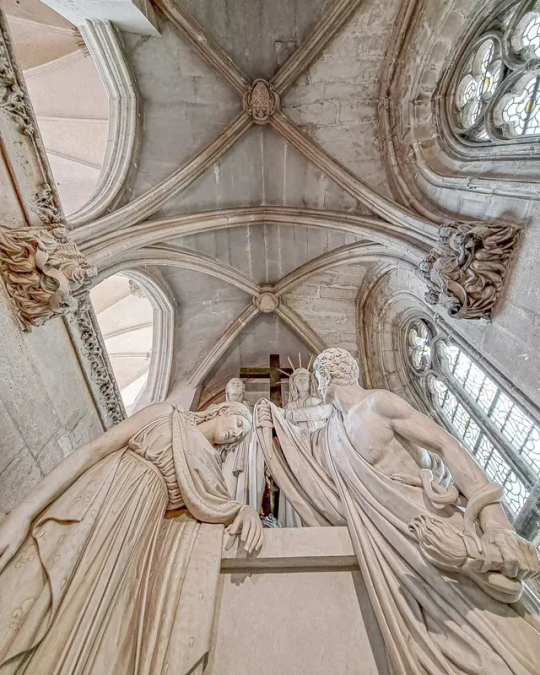
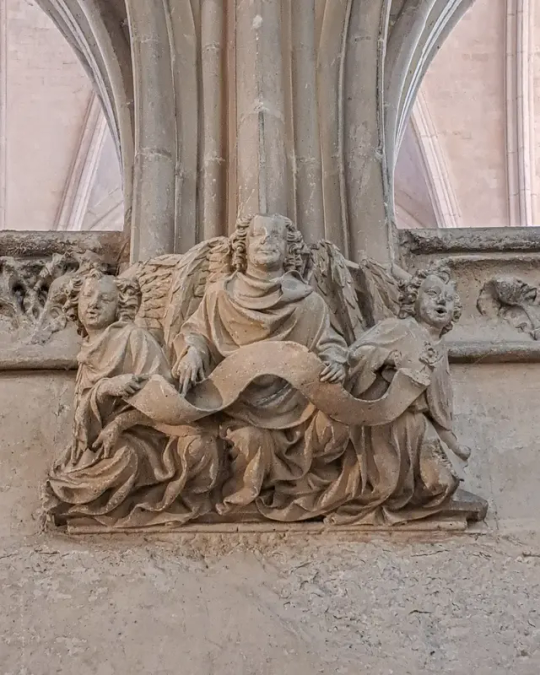

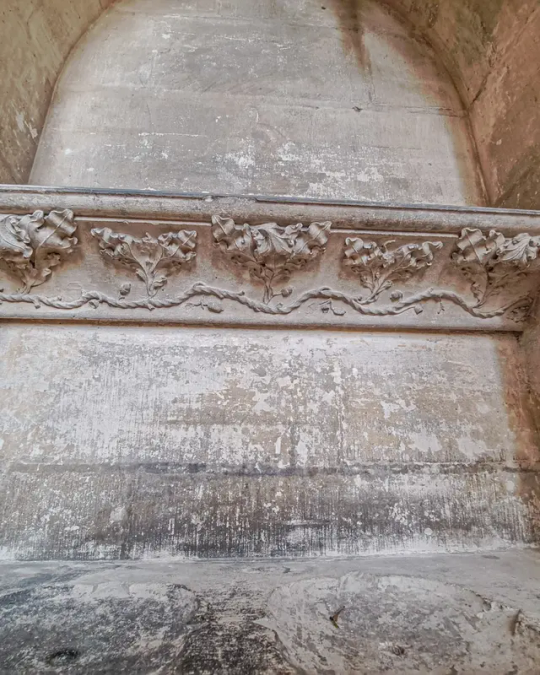
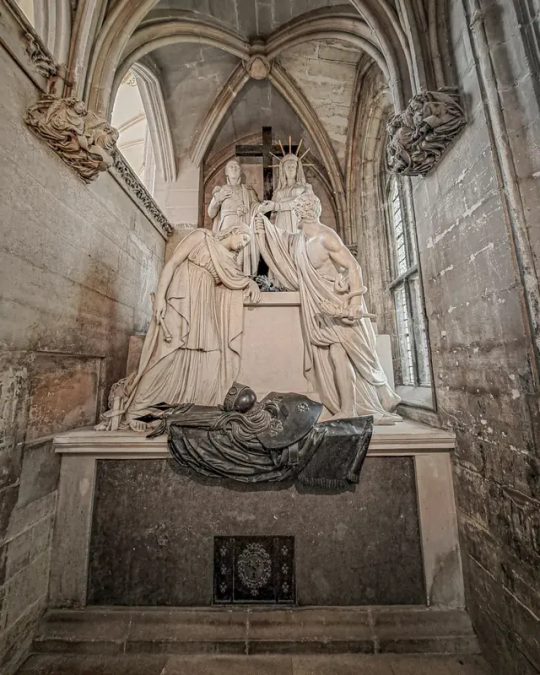
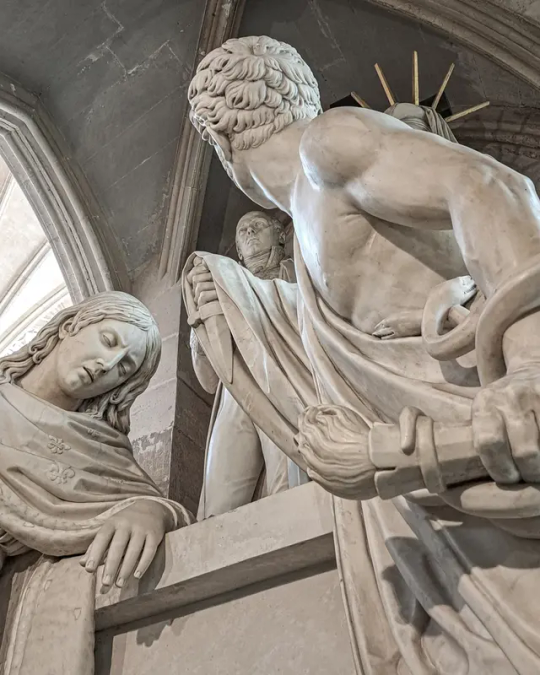
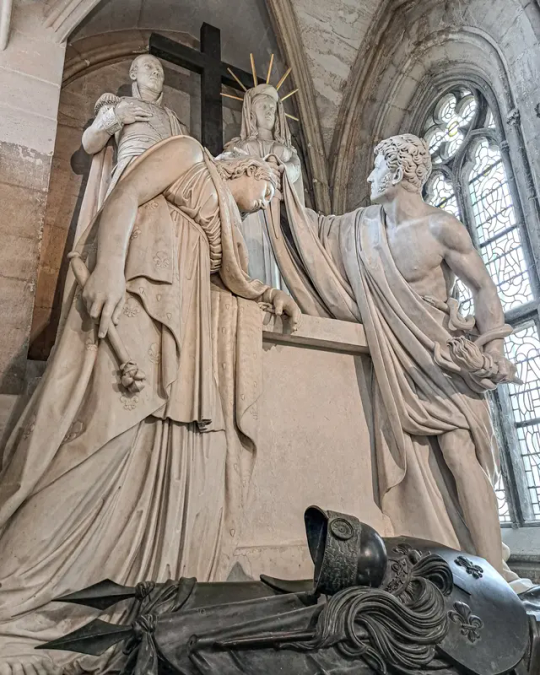
The Sainte-Chapelle de Vincennes is a Gothic royal chapel within the fortifications of the Château de Vincennes on the east edge of Paris, France. It was inspired by the Sainte-Chapelle, the royal chapel within the Palais de la Cité in Paris. It was begun in 1379 by Charles V of France to house relics of the Passion of Christ. It is no longer used as a church, and is now a French historical monument operated by the Centre des monuments nationaux.
Here on display the side chapel with the tombe of the Duc d'Enghien who was executed in 1804. (He was charged , innocently it seemed afterwards, to be involved complotting against First Consul Napoleon Bonaparte.) The sculpture is made by Pierre Louis Deseine in 1824.
#vincennes#chateaudevincennes#europe#architecture#historic buildings#architectural history#history#art history#historical#france#paris#sculptor#sculpture#scultura#tombeau#tombstone#tomb#tombe#neoclassico#neoclassicism#neoclassical#gothic#memorial#chapel#chapelle#funerary art#artwork#art#arte#explore
605 notes
·
View notes
Text
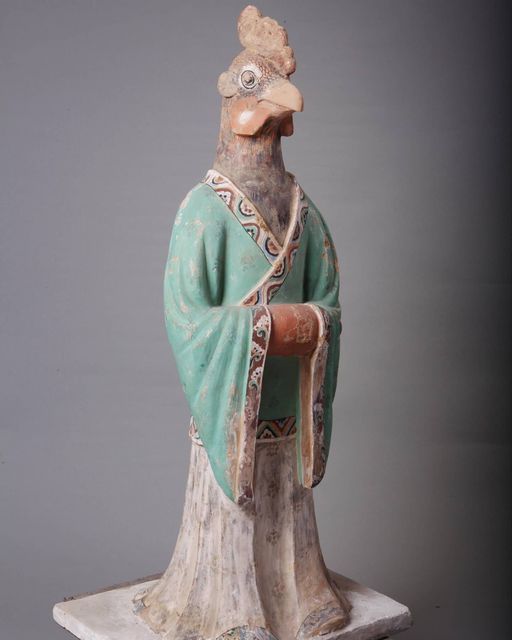
Sculpture with rooster head, was found in a tomb at Gaochang, a Tang city on the edge of the Taklamakan Desert, 7th-10th century, Tang Dynasty, China.
585 notes
·
View notes
Text
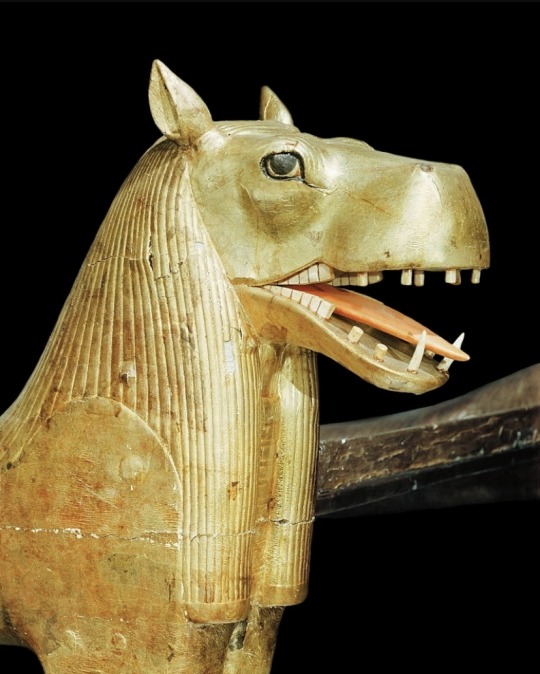
Head of a funerary couch, in the shape of Ammit 😛
Ammit is a celestial beast who bestows final judgement on the deceased and devours the unjust in the court of Osiris.
Populalrly depicted in funerary texts like the Book of the Dead, Ammit is usually a combination of a crocodile's head, the front legs of a lion, and the hindquarters of a hippopotamus.
Found among three ritual funerary couches in Tutankhamun's antechamber and made of stuccoed gilded wood with each animal's eyes inlaid with colored glass paste, this particular couch is variedly composed of a curiously different configuration: a hippopotamus' head wearing a wig, a leopard's body, and a crocodile's tail and crest
#art#weird#archaeology#sculpture#ancient#ancient art#tutankhamen#tutankamon#ancient egypt#egyptology#egypt#egyptian art#ancient egyptian art#funerary customs#funerary art#book of the dead#ammit#kemetic#ancient kemet#kemet
587 notes
·
View notes
Text

This is one of the only terracotta warriors that was found almost completely intact.
Note the detail on the bottom of his shoe, showing that grip and traction were considered in footwear even 2,200 years ago.
Each life-sized clay warrior was crafted to be completely unique and there are no two terracotta warriors-among the 8,000 total—that are exactly the same.
Shortly after the completion of the tomb in 210-209 BC, it was looted for weapons and burned, causing the roof to collapse, crushing the terracotta warriors.
All the other terracotta warriors that are currently on display were painstakingly restored.
What's even more remarkable is that the terracotta warriors were originally painted in bright colors by skilled artisans.
Unfortunately, when they were exposed to air and sunlight during the excavation in the 1970s, the colors began to curl up almost immediately and disappeared within minutes.
These terracotta warriors were put in place to guard the tomb of the first emperor of unified China — Qin Shi Huang (18 February 259 BC – 12 July 210 BC).
To this day, the tomb has yet to be opened.
According to ancient historians, the tomb contains an entire kingdom and palace in which the ceilings are decorated with pearls to mimic the night sky.
The tomb is also said to contain extremely rare artifacts and has been rigged with crossbows to shoot anyone trying to break in.
To keep its location a secret, the workers were entombed with the emperor.
As described by Han dynasty historian Sima Qian (145-90 BCE) in the Records of the Grand Historian, he mentioned that inside the tomb, "mercury was used to fashion the hundred rivers, the Yellow River and the Yangtze River, and the seas in such a way that they flowed."
Modern tests have indicated extremely high levels of mercury in the surrounding soil.
#Qin Shi Huang#terracotta warriors#Qin Dynasty#China’s First Emperor#clay warrior#Terracotta Army#Mausoleum of the First Qin Emperor#funerary art#Ancient Chinese Warfare#military power#terracotta sculptures#Shaanxi#China
161 notes
·
View notes
Text
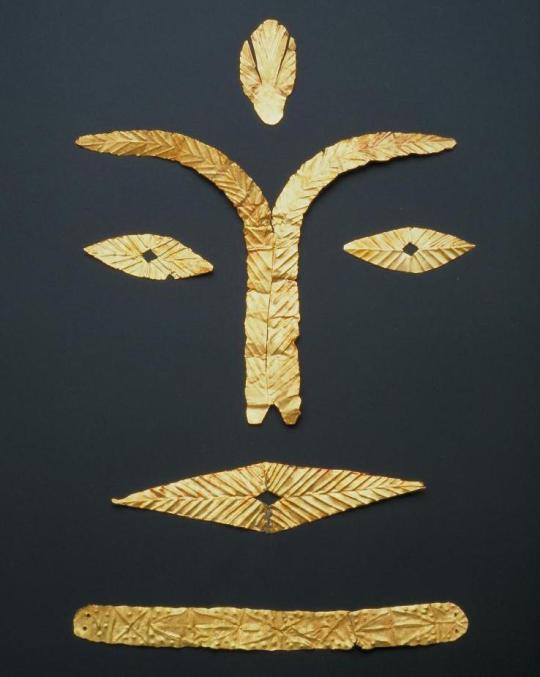
Funerary Face Cover, Java, Indonesia,
Preclassic Period (ca. 500 B.C.E. / 500 C.E.)
Gold,
Eye-Nose cover: 4.54 × 4.8 cm, 1.087 g, 0.01 cm (1 13/16 × 1 7/8 in., 1.087 g),
#art#history#design#style#archeology#sculpture#antiquity#mask#funerary#java#indonesia#preclassic period#gold#jewelry#jewellery
29 notes
·
View notes
Text

Staglieno Cemetery, 2015
(Sony A7 + Minolta MC Rokkor 50mm f1.4)
#Staglieno#Cemetery#Marble sculpture#Funerary art#Romantic art#Romanticism#minolta#original photography#photographers on tumblr#artists on tumblr#vintage lens#sony a7#minolta mc rokkor 50mm 1.4#black and white#original photography on tumblr#Faith#Beauty
14 notes
·
View notes
Text

Marble funerary statues of a maiden and a little girl, Greek, 320 BCE
From the Met Museum
#sculpture#statue#art#funerary statue#maiden#girl#greek#ancient greek#ancient greece#ancient#320 bce#300s bce#bce
16 notes
·
View notes
Text

Grave wreath
ARTIST: Artist unrecorded
DATE: C. 1880
PLACE MADE: Paris, VILLE DE PARIS, France, Europe
MEDIUM: Glass beads, ceramic, wire
12 notes
·
View notes
Text

~ Funerary Statuette: Bird Trainer.
Place of origin: China
Period: Six Dynasties (A.D. 220-589)
Date: A.D. 5th-6th
Medium: Gray terracotta, traces of paint and white slip
#ancient#ancient art#history#museum#archeology#ancient sculpture#ancient history#archaeology#sculpture#5th century#6th century#china#Chinese#asian#asian art#funerary statuette#bird trainer#six dinasties#terracota
872 notes
·
View notes
Text

Attributed to Kallimachos, found in the Kerameikos Cemetery, Funerary Stele of Hegeso, ca. 410-400 BCE, Classical, marble (National Archaeological Museum, Athens)
#ancient greek art#sculpture#stele#funerary sculpture#classical period#greek art#archaeology#5th century bc
3 notes
·
View notes
Text

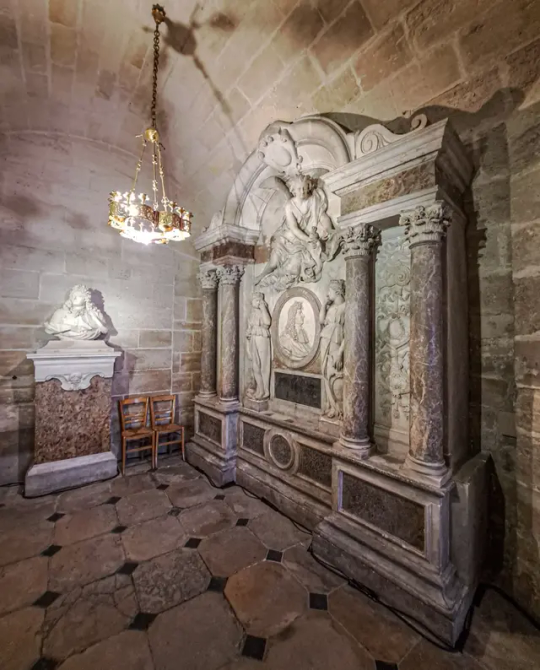


Not in the Dôme des Invalides (Saint-Louis des Invalides) in Paris, that he build to be buried in, but in a corner of the crypt of the Basilica-Cathedral of Saint-Denis is the last resting place of Louis le Grand, the Sunking, Louis IVX of France.
In 1794 his remains were removed by the French revolutionaries during the Terreur and as far they could retrieve reburied in 1817.
#europe#architecture#historical#history#art history#baroque architecture#baroque#arte#sculpture#tombstone#tomb#tombeau#funerary art#funeraria#france#paris france#paris 2024#paris#saint denis#basilica#basilique#royal#royalty#royauté#crypt#necropolis#halloween#louis IVX#king#roi
12 notes
·
View notes
Text

2 notes
·
View notes
Text


FEMALE PORTRAIT | Fragment of a Grave Stele: "Found in Athens, in the area of Votanikos. It preserves only the upper part of the image, with a standing girl, holding a pyxis [chest]. The lintel of the originally pedimental crown, preserves traces of a painted inscription. One of the earliest Attic grave stelai of the Classical period, clearly inspired by the Parthenon frieze." [txt ©NAMAthens] Pentelic marble 430-420 BC.
National Archaeological Museum, Athens | NAMAthens [Ground fl., Gallery 16]
Web : https://www.namuseum.gr/en
FB : https://www.facebook.com/namuseumathens
IG : @ namuseumathens
X : @ museumsmoments
NAMAthens | Michael Svetbird phs©msp | 14|08|24 6200X4200 600 [I., II.] The photographed object is collection item of NAMAthens [Non-commercial fair use | No AI | Author rights apply | Sorry for the watermarks]
📸 Part of the "Reliefs-Friezes-Slabs-Sculpture" MSP Online Photo-gallery:
👉 D-ART: https://www.deviantart.com/svetbird1234/gallery/72510770/reliefs-friezes-slabs-sculpture
.
#athens#archaeologica lmuseum#nam athens#national archaeological museum#αθήνα#sculpture#frieze#stele#marble#funerary art#ancient sculpture#hellenic#greek sculpture#antiquity#art history#ancient#archaeology#museum#museology#heritage#antiquities#classical#culture#sculpture photography#museum photography#archaeology photography#art photography#bnw#photo gallery#michaelsvetbird
4 notes
·
View notes
Photo

Transi-tomb
Chantry chapel and tomb of Thomas Bekynton, chancellor of England and Bishop of Wells, (1443-1464).
#bizarre au havre#transi#lying#funerary art#corpse#death#dark#cadaver#gisant#art funéraire#cadavre#la mort#sculpture#art#artist#artiste
30 notes
·
View notes